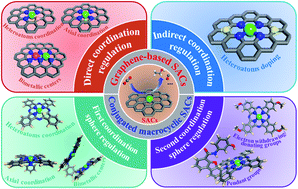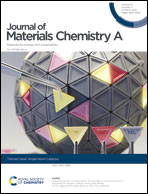Support-based modulation strategies in single-atom catalysts for electrochemical CO2 reduction: graphene and conjugated macrocyclic complexes
Abstract
The electrochemical CO2 reduction reaction (CO2RR) is a promising method to decrease the CO2 concentration in the atmosphere and produce high value-added chemicals simultaneously. Catalysts play a central role in the CO2RR system, and can determine the conversion efficiency and product species. Single-atom catalysts (SACs), a new class of catalysts, have been extensively employed in the CO2RR due to their high activities, selectivity and maximum atom utilization efficiency. In this review, an overview of the recent progress of SACs for the CO2RR is provided with respect to two types of catalyst supports including graphene (Gr)-based nanomaterials and conjugated macrocycle (CM)-based complexes. Specifically, we focus on significant influencing factors on the activity and selectivity of the modeled catalysts, such as heteroatom doping, ligand effects and bimetals. Insights on the intrinsic connection between electronic structures and catalytic properties are summarized. Moreover, the stability and the dynamic structural change of SACs under operating conditions are also discussed. Finally, some challenges and perspectives are raised for the future development of efficient SACs based on Gr and CM supports.

- This article is part of the themed collection: Single-Atom Catalysis


 Please wait while we load your content...
Please wait while we load your content...